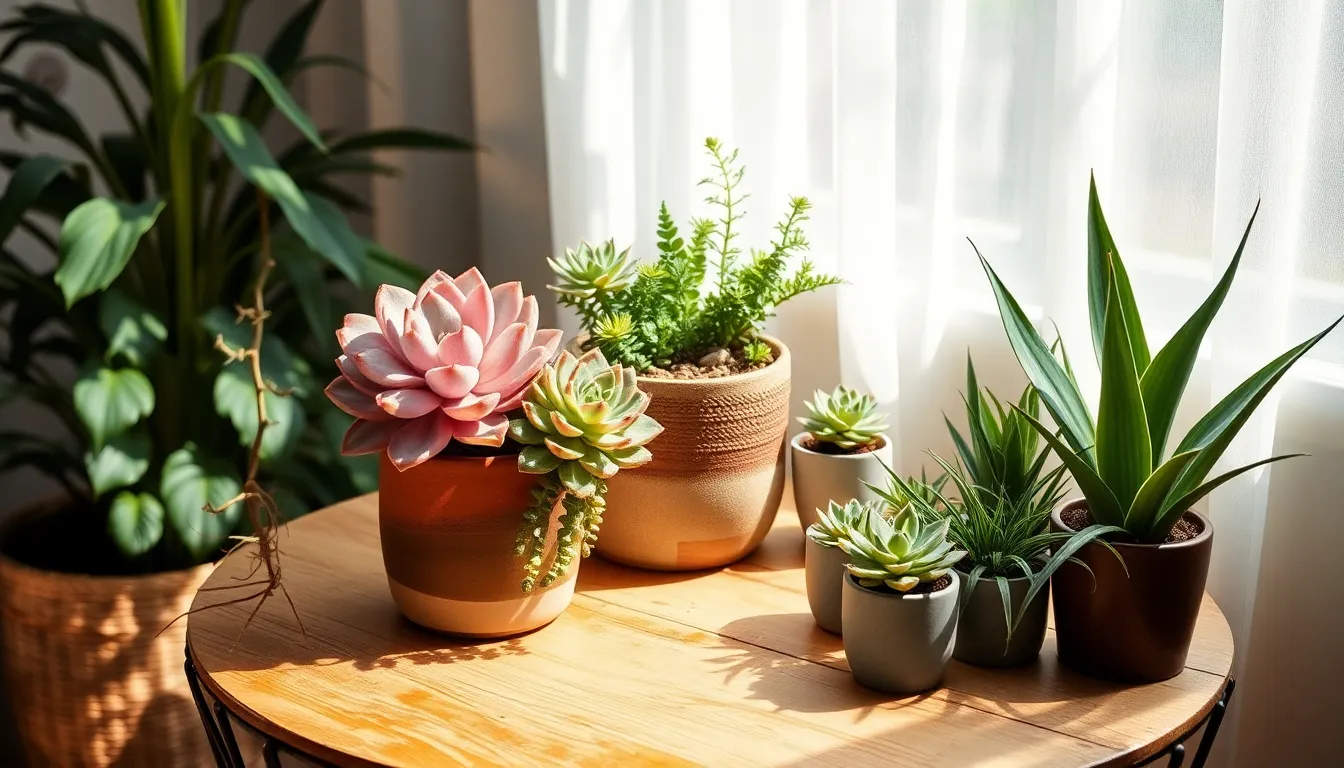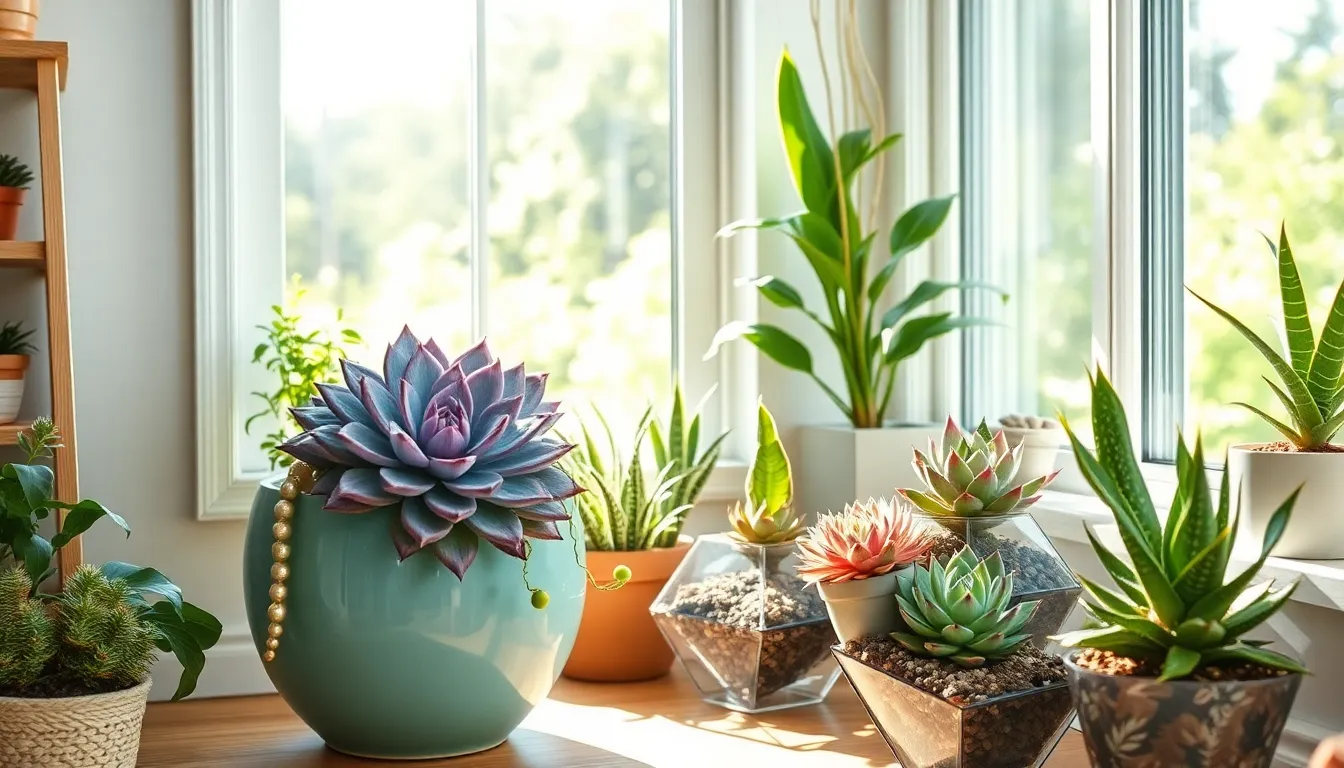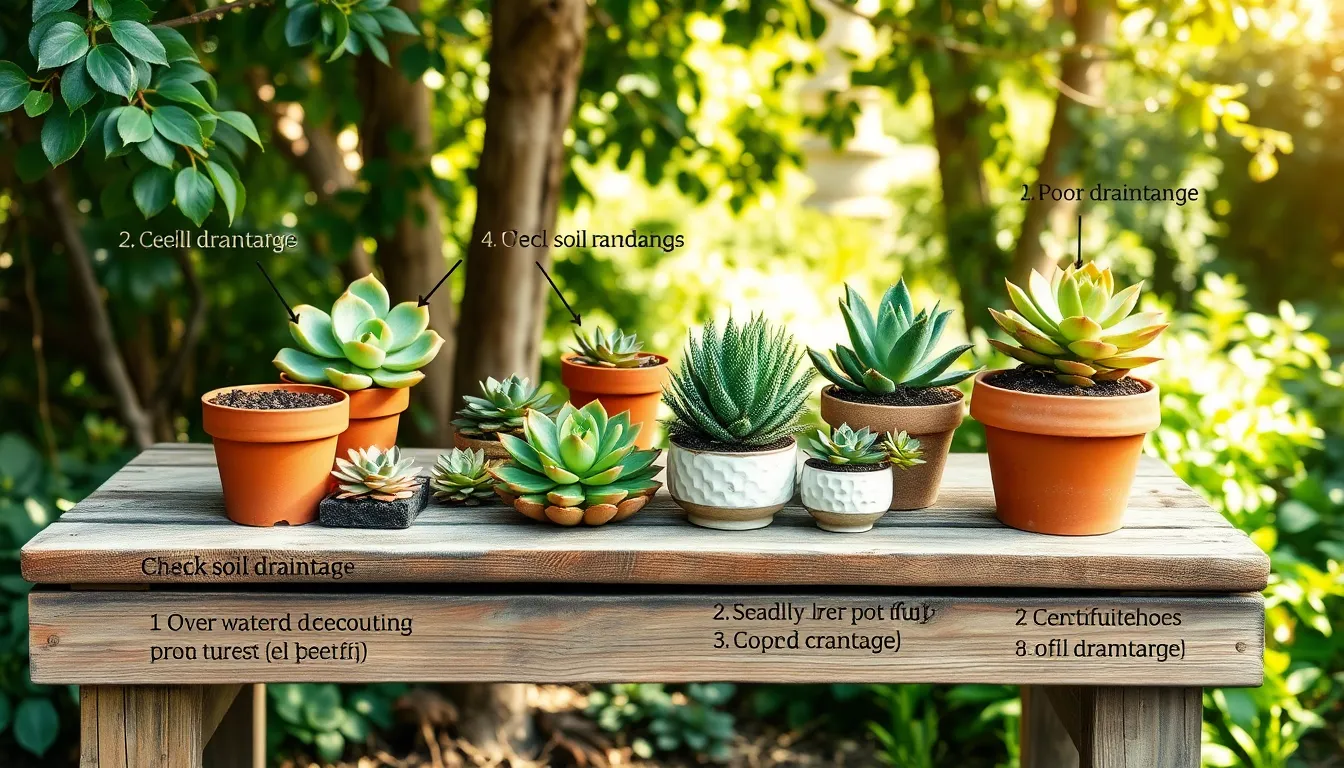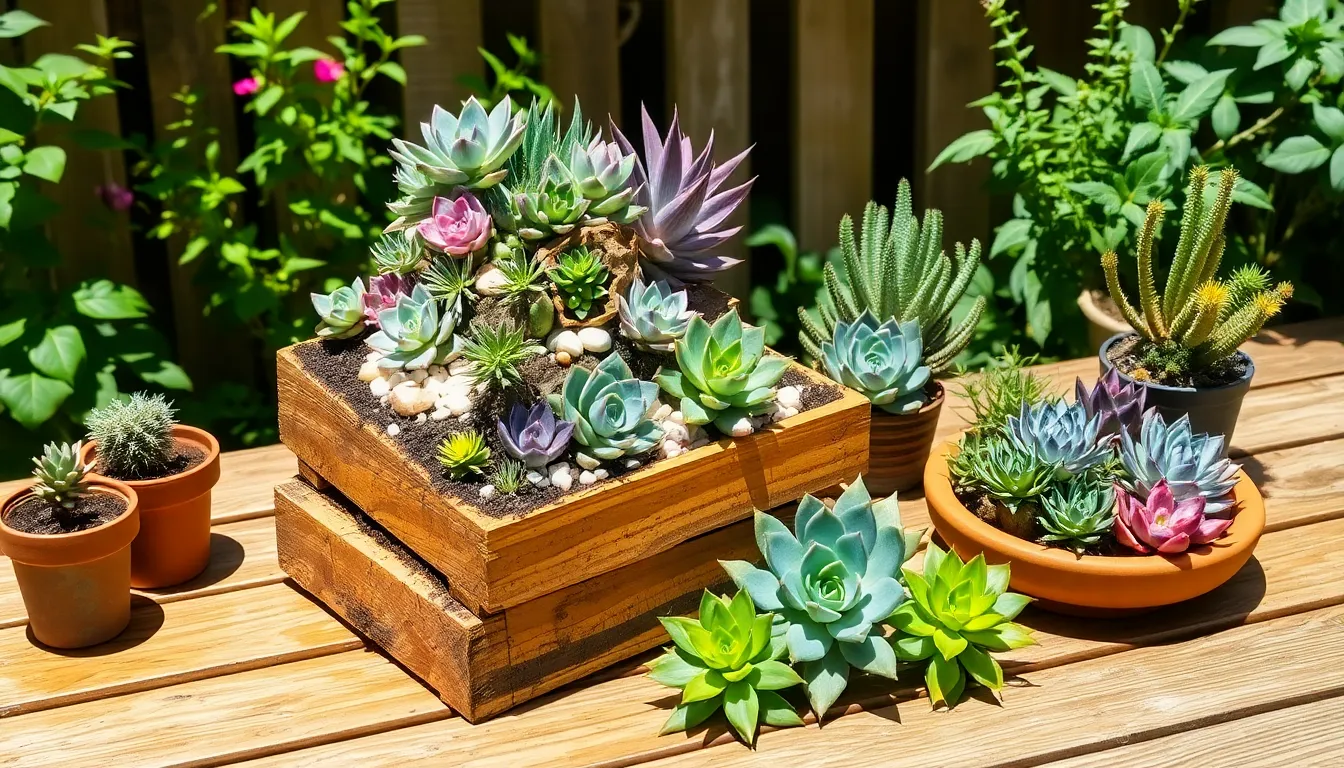Imagine bringing the tranquility of nature into your home with an indoor garden that thrives even in the coziest, dim-lit corners of your space. Whether you’re a budding gardener just starting your journey or a seasoned plant enthusiast seeking to expand your collection, “Best Succulents for Beginners in Low Light” offers the perfect guide to cultivating a lush, vibrant oasis with minimal sunlight.
This list is a treasure trove of hardy succulents that not only survive but flourish where others might wither, transforming any room into a haven of greenery and peace. With practical tips and insights tailored to both novice and experienced green thumbs, you’ll gain the confidence to nurture these resilient plants and reap the rewarding joys of successful gardening. Embrace the satisfaction of watching your succulents thrive as they enhance your home with their unique charm and resilient spirit.
Snake Plant ‘Bird’s Nest’ (Sansevieria trifasciata ‘Hahnii’)
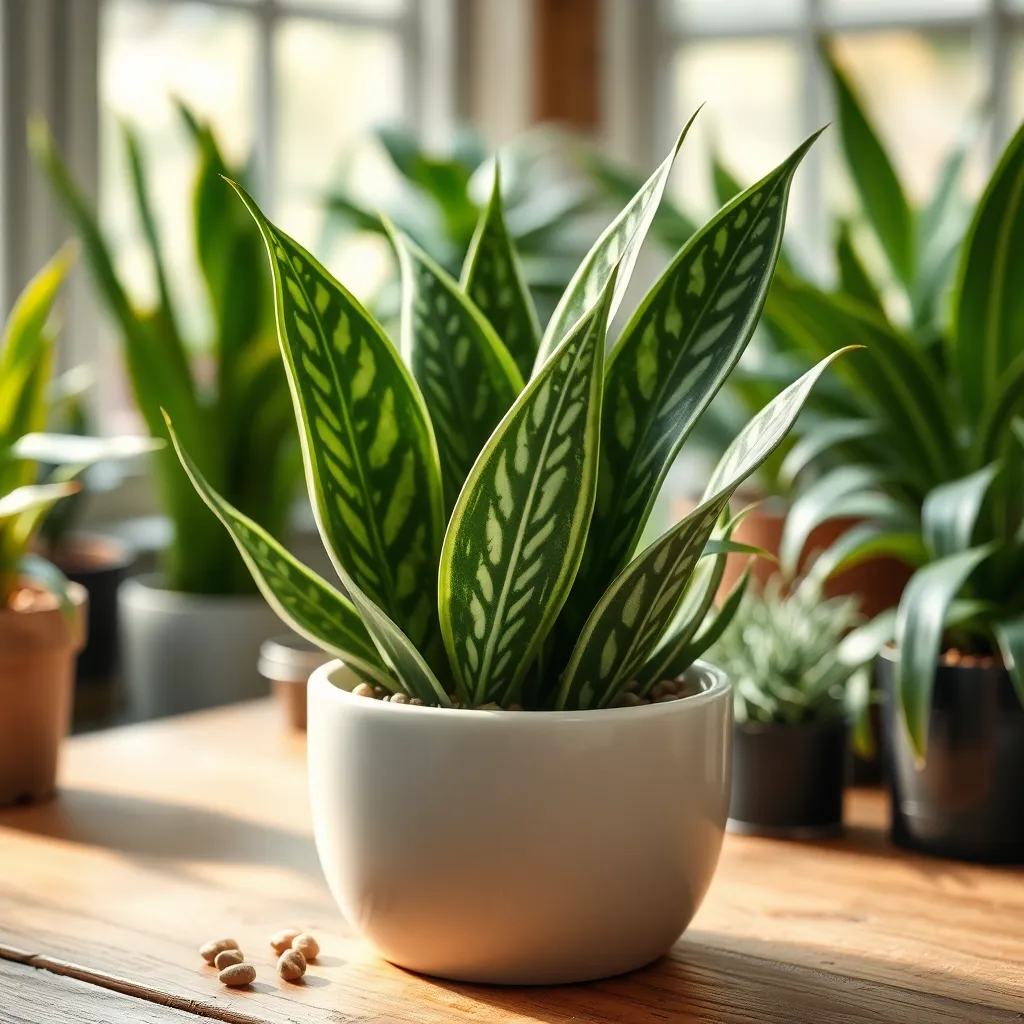
The Snake Plant ‘Bird’s Nest’ (Sansevieria trifasciata ‘Hahnii’) is a perfect choice for beginners due to its resilience and low maintenance needs. This compact succulent thrives in low-light conditions, making it ideal for indoor settings where sunlight is scarce.
To care for your ‘Bird’s Nest,’ ensure you use a well-draining cactus or succulent potting mix. Overwatering is the most common mistake, so allow the soil to dry out completely between waterings, typically every 2-3 weeks depending on humidity levels.
Although tolerating low light, this plant will grow best with some indirect sunlight. If you notice the leaves losing their vibrant green color, consider moving it closer to a light source or supplementing with a grow light.
For those looking to propagate, the ‘Bird’s Nest’ can be easily multiplied through division. Simply remove the plant from its pot and gently separate the root clumps, ensuring each division has a few leaves and some roots before replanting in fresh soil.
Panda Plant (Kalanchoe tomentosa)
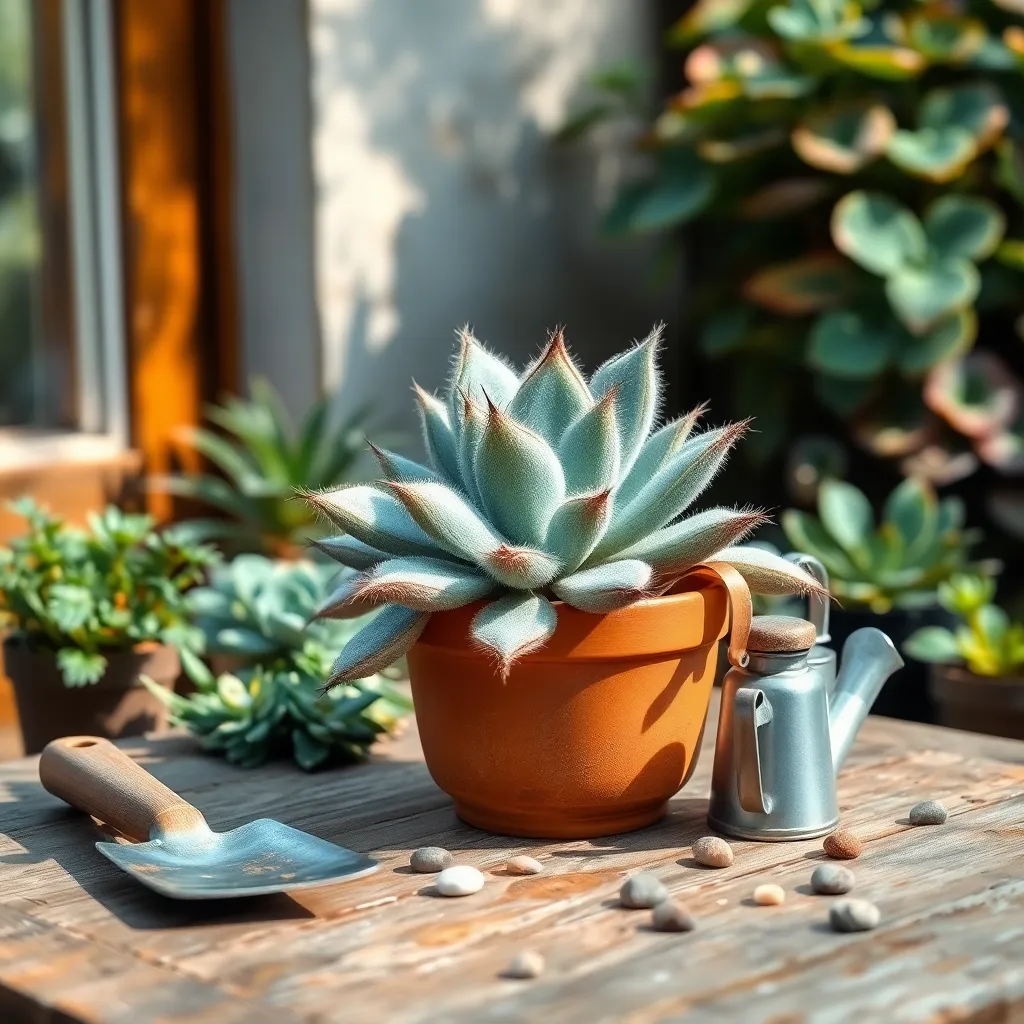
The Panda Plant (Kalanchoe tomentosa) is a charming succulent that’s perfect for beginners, especially in low-light conditions. Its fuzzy, silvery-green leaves with brown edges make it an attractive addition to any indoor garden.
When caring for the Panda Plant, it’s important to use a well-draining soil mix, such as a cactus or succulent blend, to prevent root rot. Water sparingly, allowing the soil to dry out completely between waterings, which usually means watering every 2-3 weeks.
Place your Panda Plant in a spot where it receives indirect, bright light, though it can tolerate lower light conditions better than many other succulents. If you notice the leaves stretching or losing their vibrant color, gradually increase the light exposure.
For those looking to propagate, this plant can be easily multiplied through leaf cuttings. Simply remove a leaf and let it callous over for a few days before placing it in soil, keeping it slightly moist until roots develop.
Ghost Plant (Graptopetalum paraguayense)
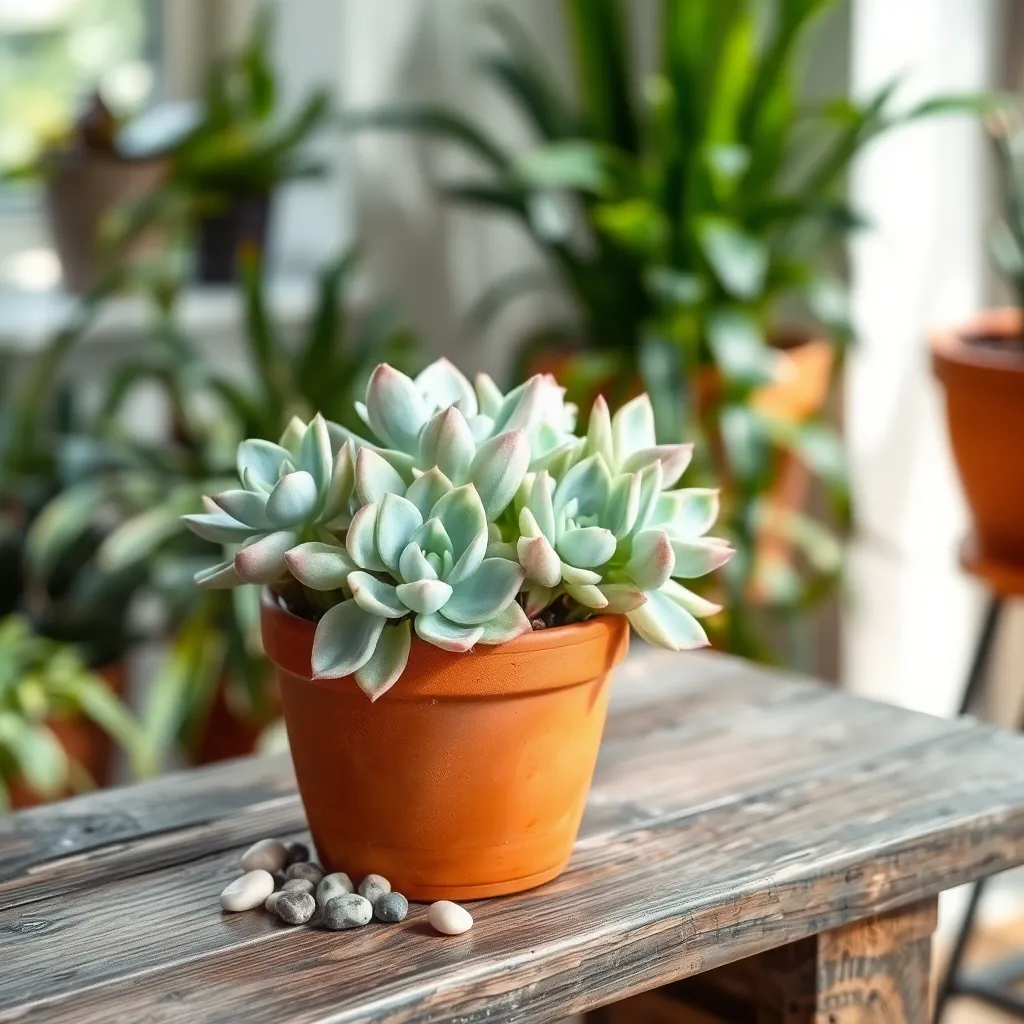
The Ghost Plant, also known as Graptopetalum paraguayense, is a striking succulent perfect for beginners. Its pale, powdery leaves form rosettes that add a unique charm to any indoor garden.
To care for a Ghost Plant, place it in a spot with indirect light, as direct sunlight can scorch its delicate leaves. While it can tolerate lower light conditions, ensure it gets at least a few hours of bright, filtered light each day for optimal growth.
Watering the Ghost Plant requires a careful balance. Allow the soil to dry out completely between waterings, and then water thoroughly, ensuring excess water drains away to prevent root rot.
For best results, use a well-draining soil mix specifically formulated for succulents and cacti. Adding perlite or pumice to potting soil can enhance drainage, helping prevent overwatering issues.
Advanced gardeners might consider adjusting watering frequency with the changing seasons. During its active growing season in spring and summer, water more frequently, but reduce watering in fall and winter when the plant’s growth slows.
String of Pearls (Senecio rowleyanus)
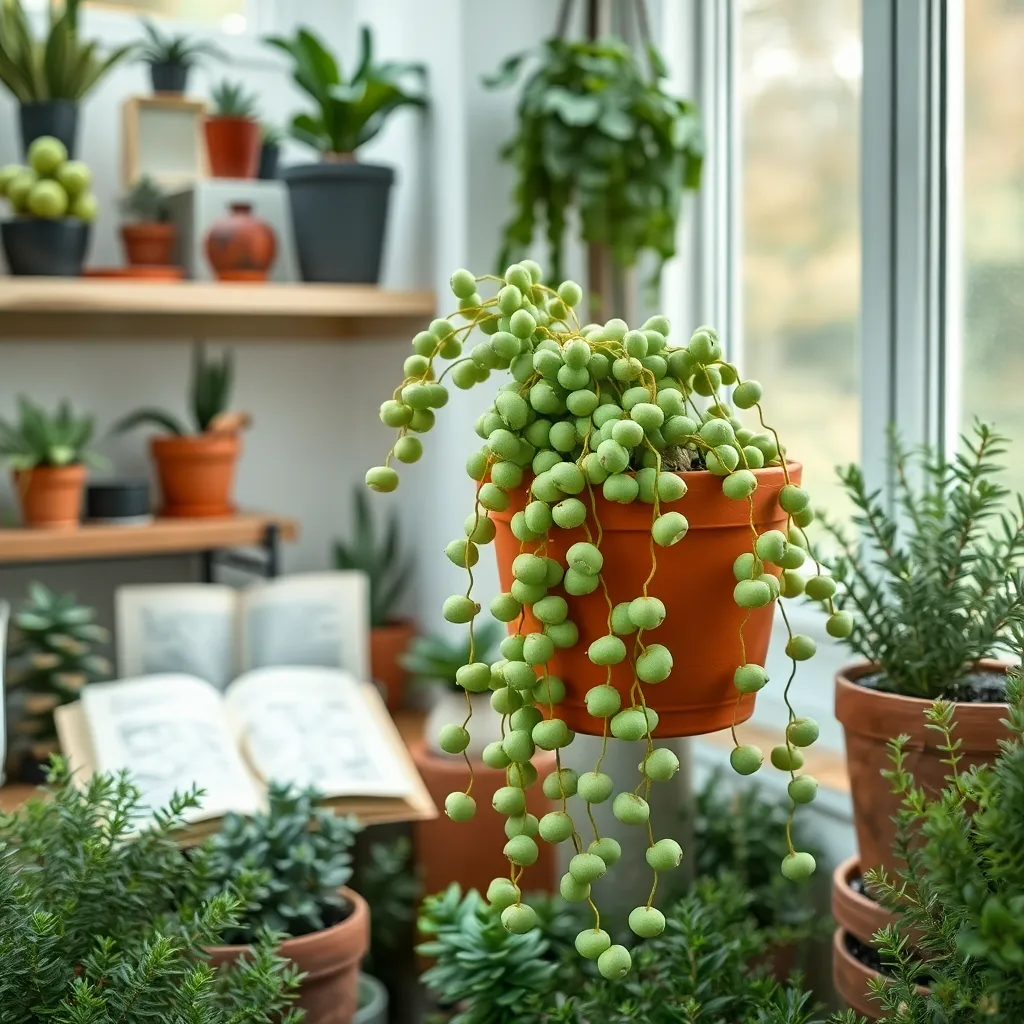
String of Pearls (Senecio rowleyanus) is an intriguing succulent known for its unique, bead-like leaves. It’s a perfect choice for beginners looking to add a touch of whimsy to their indoor plant collection, especially in low-light areas.
To keep your String of Pearls thriving, place it in a spot with bright, indirect light. If you notice the pearls starting to shrivel, it may be a sign the plant isn’t getting enough light, even if it’s in a low-light environment.
Watering this succulent correctly is crucial; allow the soil to dry out completely between waterings to prevent root rot. A good rule of thumb is to water it every two to four weeks, adjusting based on the humidity and temperature of your home.
For optimal growth, use a well-draining cactus or succulent soil mix, which helps prevent water from sitting at the roots. Consider adding some perlite or pumice to your soil mix for even better drainage, a tip that experienced gardeners often employ.
Finally, if you’re feeling adventurous, try propagating your String of Pearls by cutting a strand and laying it on top of moist soil. With patience, you’ll soon have new growth, expanding your collection without much effort.
Burro’s Tail (Sedum morganianum)
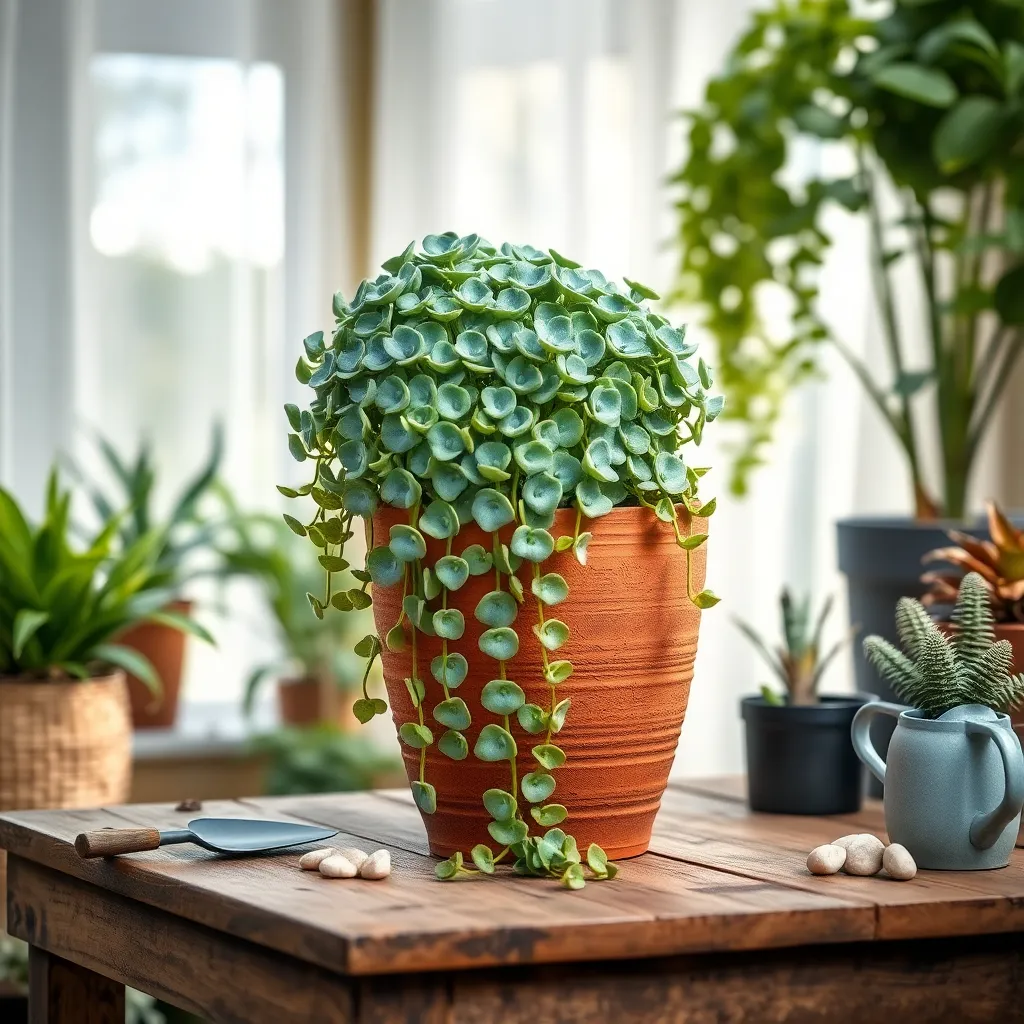
Burro’s Tail (Sedum morganianum) is a charming succulent known for its trailing stems adorned with plump, blue-green leaves. It’s an excellent choice for beginners, especially since it thrives in low-light conditions and requires minimal maintenance.
To ensure your Burro’s Tail thrives, place it in a spot with indirect light, such as near a north-facing window. Although it can tolerate low light, providing some bright, indirect light will help maintain its vibrant coloration and promote healthy growth.
Watering is straightforward—allow the soil to dry out completely between waterings to prevent root rot, a common issue with succulents. Typically, watering every two to three weeks is sufficient, but adjust based on your home’s humidity and temperature.
For optimal growth, use a well-draining soil mix, such as a cactus or succulent blend, to prevent water from lingering around the roots. If you’re feeling adventurous, try propagating Burro’s Tail by gently removing a stem and letting it callous over before planting it in a small pot; this is a rewarding way to expand your succulent collection.
Conclusion: Growing Success with These Plants
In exploring the best succulents for beginners in low light, we’ve delved into the key relationship concepts of patience, adaptability, nurturing, resilience, and growth. These elements are not only crucial in cultivating plants but also in nurturing strong, healthy relationships. Patience allows relationships to flourish at their own pace, while adaptability helps partners adjust to changing circumstances. Nurturing ensures that care and attention are consistently given, resilience strengthens bonds through challenges, and growth encourages continuous learning and improvement together.
As an actionable next step, choose one of these concepts to focus on this week with your partner or loved ones. Perhaps practice patience by actively listening or adaptability by trying something new together.
Remember, building thriving relationships is a journey. Bookmark this article as a handy guide to revisit these essential concepts whenever you need a reminder of the foundational elements that contribute to lasting connections. As you apply these principles, you’ll find that your relationships can bloom beautifully, just like those low-light succulents, thriving even in the most challenging conditions. Here’s to nurturing your bonds with love and intention, ensuring they grow stronger each day.

